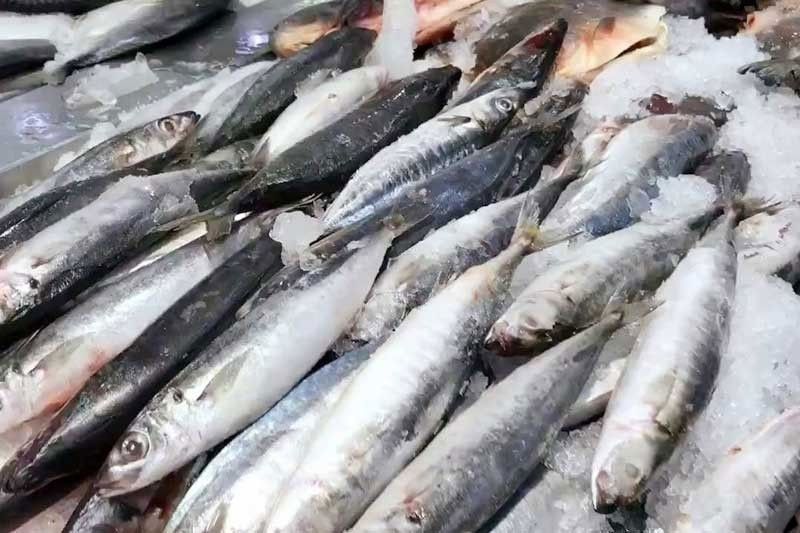Approved fish importation volume too much

MANILA, Philippines — Fishing groups have expressed concern over the approved fish importation volume of 60,000 metric tons (MT), saying this may flood the local market with fish supply.
In a virtual press briefing yesterday, Rosanna Contreras, executive director of SOCSKSARGEN Federation of Fishing & Allied Industries, Inc. said importing too much may affect the livelihood of fisherfolks.
“Because if the importation volume is too much, there will be fish that will not be sold and the excess fish will end up in the local market of the regions who have sufficient supply,” Contreras said.
“Of course more supply, then that will flood the market and lower the price and that will be detrimental to our local fish producers. That is one of the worries of our region,”she said.
Last week, Agriculture Secretary William Dar approved the issuance of a certificate of necessity to import (CNI) 60,000 MT of fish for the fourth quarter in a bid to augment local supply during the closed fishing season.
Dar said the approved volume was based on the recommendation of the Bureau of Fisheries and Aquatic Resources (BFAR) in coordination with the Philippine Fisheries Development Authority (PFDA), and in consultation with the National Fisheries and Aquatic Resources Management Council (NFARMC) and fishing industry stakeholders.
However, Contreras, who represents the aquaculture sector in the NFARMC, said the council’s recommendation was for an importation volume of only 30,000 MT.
She expressed further concern that with the 60,000 MT CNI only covering the fourth quarter, more permits could be issued in the first quarter of next year.
Aside from BFAR’s recommendation, the National Economic and Development Authority (NEDA) earlier recommended a maximum importation volume of 200,000 MT for the fourth quarter and the first quarter of 2022.
Contreras’ concern was also echoed by other fisheries groups such as Pangisda Pilipinas, the Alliance of Philippine Fishing Federation Inc. (APFFI), the Association of Fresh Fish Traders of the Phils. and Tugon Kabuhayan.
“We’re confident there will be enough fish when certain fishing areas are closed by year end,”the groups said in a joint statement.
Based on the projection gathered from fish farmers, the groups said the aquaculture sector would be able to fill in the expected drop in commercial fisheries production in the last quarter.
They emphasized that farmgate prices remain low and small producers and operators face marketing challenges as overflowing supply is driving low prices.
In addition, municipal fishers continue to contribute to fish production as municipal waters are not included during the closed season.
The closed fishing season is implemented annually to allow fish stocks to replenish and ensure the abundance of the supply.
The groups also stressed that there is huge untapped potential to boost domestic production. They urged the DA to support domestic producers instead.
Meanwhile, Tugon Kabuhayan said aquaculture may be also supported if the DA would work with relevant agencies on approvals of pending aquaculture projects.
“Local government units also need technical assistance in conducting site suitability studies and in crafting local ordinances governing the aquaculture industry,” it said.
Tugon Kabuhayan said there are numerous fishing vessels that are either currently docked or undergoing repairs.
“Operators need soft loans to recapitalize and increase the sizes of these vessels, with lower insurance premium. Ultimately, they also need government assistance in facilitating permit renewal,”Tugon Kabuhayan said.
The fisheries groups also emphasized the need to enable the country’s local fleet to fish in farther, resource-rich waters like the West Philippine Sea, and at the same time increase the capacity of the municipal fisherfolk and aquaculture sector.
“In doing so, we increase our production and protect our local industry as well,” the group of fish producers said.
The approved CNI volume includes small pelagic fishes like roundscad or galunggong, mackerel, and bonito that will be sold in public wet markets for the benefit of consumers, particularly in Metro Manila and fish-deficient areas in the country.
The CNI is valid from Sept. 2 to December 2021. The approved quantity is slightly smaller than the supply deficiency as projected by the BFAR at 65,000 MT in the fourth quarter.
- Latest
- Trending































